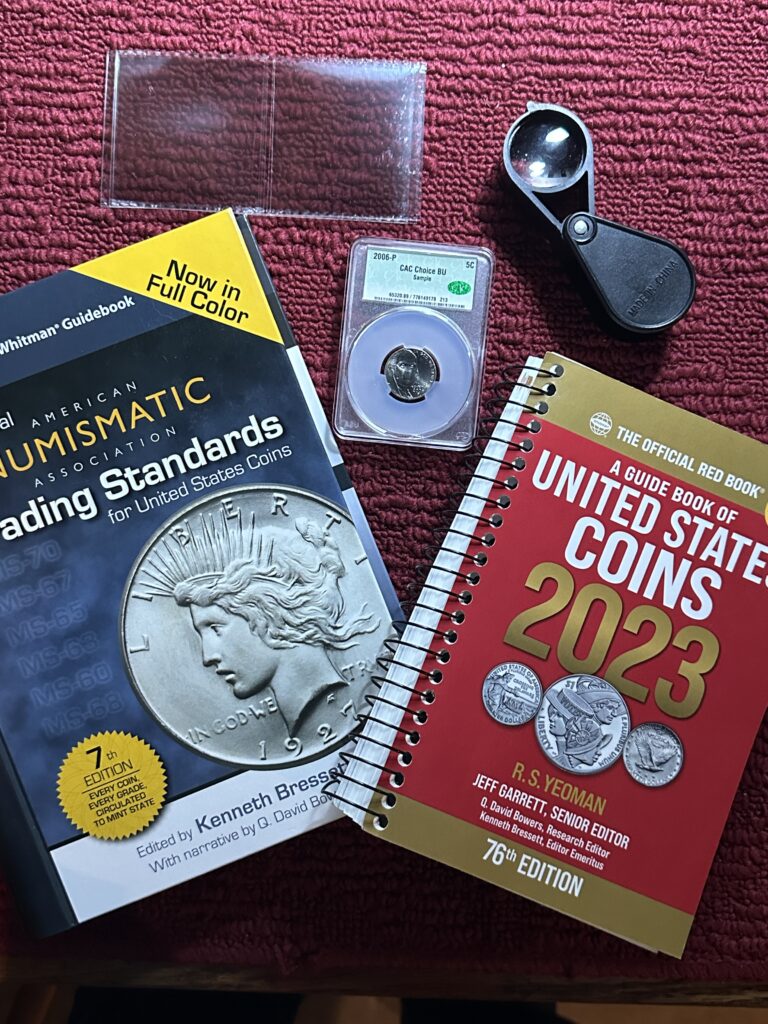So You’re New to Collecting Coins
Once you have decided that you want to collect and invest in coins there are a number of basic rules that will serve you well:
(1) Buy a Red Book – Although everyone in the hobby calls it “the red book,” it is technically called A Guidebook of United States Coins and is published on an annual basis. Originally published by R.S. Yeoman in 1946, this has been the “bible” for coin collectors for almost 80 years. From 1971 to 2017 it was edited by world famous numismatist Ken Bressett and in 2018 Jeff Garrett began editing this must have publication. Although the prices listed in the Red Book are a bit high, the wealth of information on all the various denominations and variations of all U.S. Coins makes it the primary source that is recognized by everyone in the business. There’s an old saying, “Buy the book before you buy the coin.” A current edition of the Red Book is the very first $20.00 you should spend.
(2) Find a Series you like – the Red Book will have very detailed drawings of the various denominations and series of U.S. Coins that you may collect. Familiarize yourself with these different coins. Ebay may or may not be a place that you ultimately purchase coins, but it is a very good place that you can look at literally thousands and thousands of coins in various conditions and pay no cost. You can also gain more detailed information buy purchasing a Whitman book on one or more particular series that you like.
(3) Begin to Learn the Basics – learn about circulated and uncirculated, the Sheldon numbered grading system, the difference between raw and graded/certified coins, the various grading services, the various forms of storing and protecting your coins, and, most importantly, begin what will be a life time of learning to properly grade coins. ** There is no way to overemphasize the importance of becoming a skilled grader. You will not learn to grade overnight. It will take years and looking at thousands of coins to learn the basics. But remember that the ability to grade is the single greatest skill that you will possess that will allow you to make wise purchases and avoid paying too much or even buying a counterfeit coin.
(4) Establish a Relationship with a Reputable Dealer – Go into your local coin shop and get to know the dealer. The number of brick and mortar coin shops is declining and depending on where you live, there may not be any. Nonetheless, it is important to meet and build a relationship with a few folks in the business.
(5) Don’t buy anything on TV – there’s really not anyway to put this other than to say that the coins sold on TV are almost always overpriced and over graded. I have collected coins for over 50 years and never, even once, purchased a coin from television. Many times you are paying for fancy packaging, leather bound volumes to hold the coins, color photos with fancy text. It’s all worthless and you’re paying for it. Once you learn more, you will find that the finest coins in the world, those worth six and seven figures, are almost always encapsulated in a PCGS, NGC or CAC holder, not some fancy worthless crap from TV.
So if you are new to the hobby, I suggest you buy a red book, spend a few weeks reading it, look at as many different coins as you can on ebay or other coin websites, learn some terminology and take a visit to your local coin store. If you take the time to prepare and do some study, you will begin this wonderful hobby in a much better position. But also keep in mind that you will continue to learn and hone your grading skills for the rest of your life. Good luck and have fun!

Recent Posts
- So You’re New to Collecting Coins August 3, 2024
- Collecting and Investing in Rare Coins June 6, 2023
- Diversifying Your Portfolio June 6, 2023
Categories
- All (2)
- Uncategorized (1)